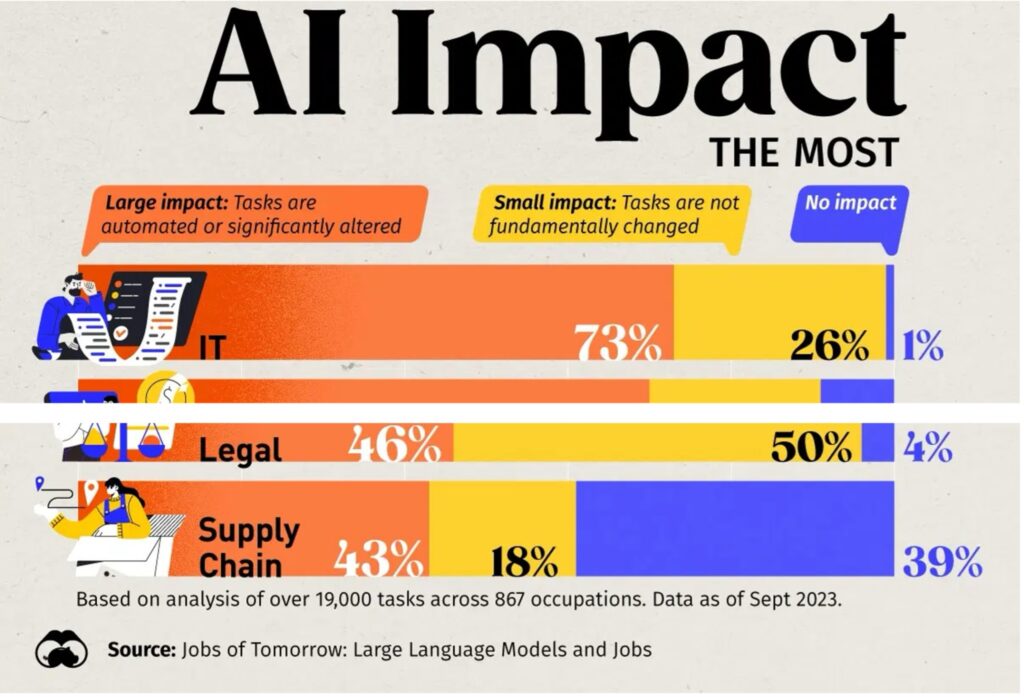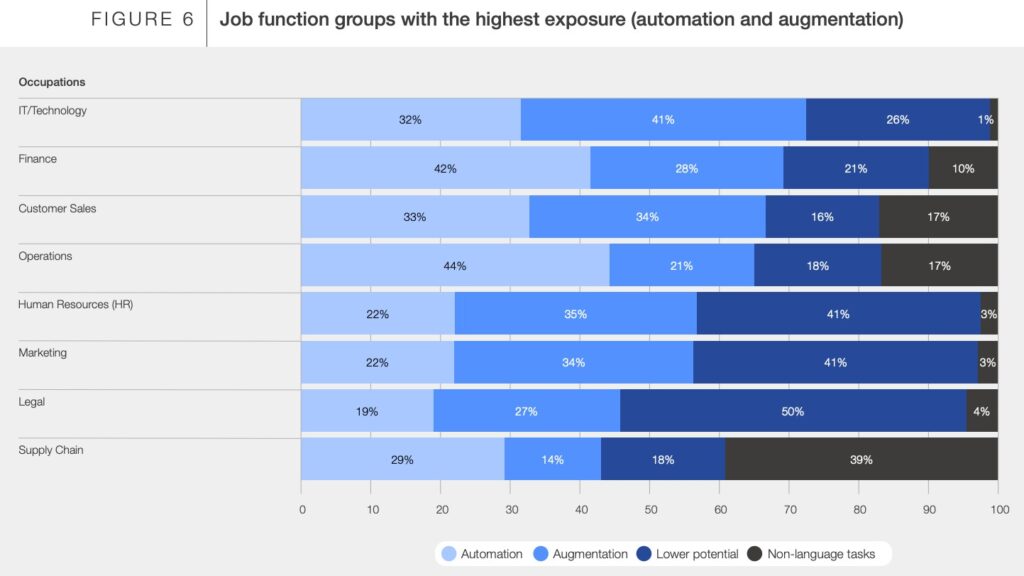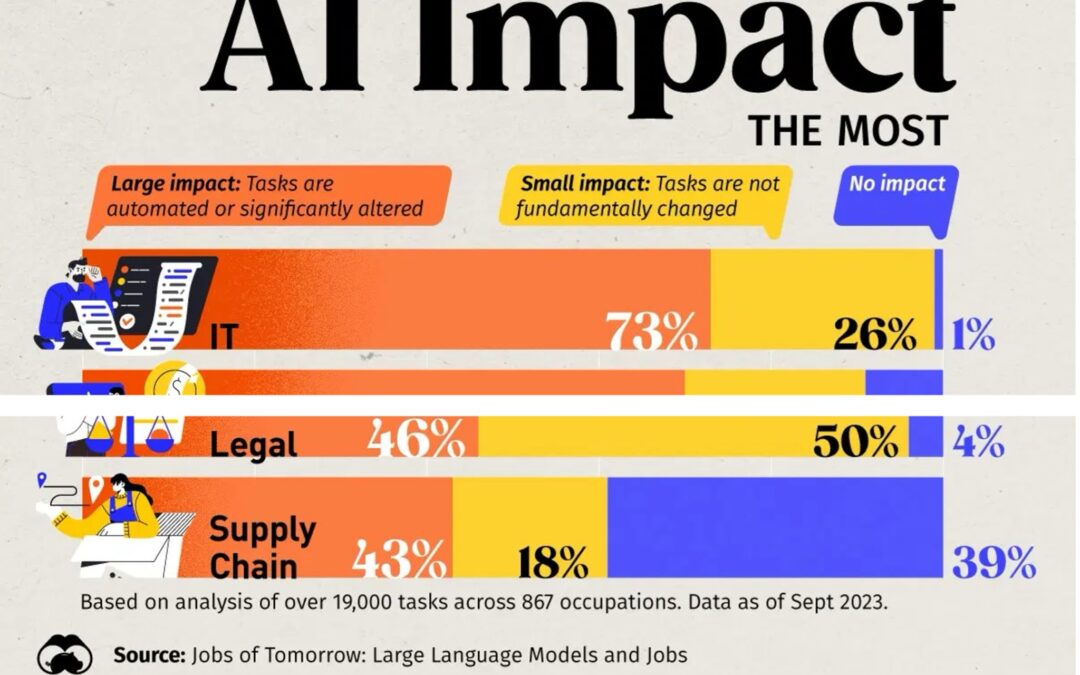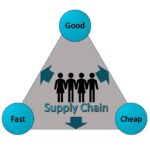A Visual Capitalist article on the impact of artificial intelligence on various job categories wandered across my news feed a couple weeks ago, and I’ve been pondering it ever since.

Following the data trail, this data was a visualization of a white paper by the World Economic Forum (WEF) from September 2023, focused primarily on the large language models such as Copilot, Midjourney and ChatGPT. The original data looks like this:

So what argument is this paper making and why does it keep turning around in my head?
Tasks for automation
Setting up the research, the article first describes which tasks are higher or lower potential for automation or augmentation. Focusing on the tasks found in supply chain, higher automation potential tasks include:
- Perform administrative or clerical activities
- Analyze data to improve operations
- Obtain information about goods or services
- Document technical designs, procedures or activities
Higher augmentation potential tasks include:
- Prepare informational or instructional materials
- Evaluate personnel capabilities or performance
Let us break down how each of these tasks show up in a supply chain team.
Cutting purchase orders is an extremely administrative task, at least for 80-90% of purchase orders. And those in the remaining 10-20% which are more complicated are easily filtered out by spend amount, supplier, part number, or category.
Analyzing data is something large supply chain teams have multiple people doing full time. They are looking at purchase price variance, commodity indices, demand signals, and sometimes financial information to make informed decisions around what to bid or buy, and when. Some teams even have process owners dedicated to improving operations using process analysis.
Obtaining information about goods or services is at the core of what a supply chain team does. A good supply chain team is the liaison between suppliers and technical teams, matching up the technical team’s needs with supplier offerings. If AI can take a specification and go search the known electronic universe for matches (which it can), that component of supply chain tasks is quickly replaced.
Every supply chain professional I know has spent at least some of their time documenting their procedures for training, onboarding, or simply being accountable to upper management. New hires, executives, and other teams all need this documentation to ensure they receive quality goods and services on time, in full, and at the right price. This blends right into the augmentation-prone task of preparing informational or instructional materials, especially when documenting for executives. Reporting on metrics and statuses took a great deal of my time as a supply chain leader, especially when COVID-era executives were appropriately worried about the state of our supply chain.
Lastly, evaluating personnel is something that impacts every people manager to some extent. While giving the feedback in a compassionate, candid way is not something AI tools can (currently) do, it can gather the information in a faster and less-biased way than humans.
Lower potential tasks for automation or augmentation cited by the WEF and relevant to the supply chain team include:
- Negotiate contracts or agreements
- Advocate for individual or community needs
- Coordinate with others to resolve problems
While I agree most of these are difficult to augment or automate, I’m shocked that negotiating contracts made the list of “low potential.” What about Evisort, Ironclad, or Sirion, not to mention others I’m sure I’m missing? While there are few contracts that need a personal touch for every edit, in hundreds of negotiations I saw the same redlined clauses replaced with optional language over and over again.
Non-language Tasks
The white paper cited some examples of tasks they deemed “Non-language tasks”, such as assembling equipment or performing agricultural activities. The paper also includes “Load products, materials or equipment for transport or further processing” as non-language. A huge percentage of supply chain tasks (39%) were classified as non-language, double the percentage of the next largest department (Customer Sales or Operations). A deeper dive into the appendices of the article starts to show that the logistics side of supply chain carries the bulk of the non-language tasks (shown in black on the right).

This further breakdown is helpful in showing where AI and large language models show up for the supply chain team, which is heaviest in planning/expediting and procurement clerks.
Relationships
The conversation on LinkedIn and elsewhere for some time has been about how supply chain is about relationships. While I have some issues with the study’s results, it is clear that this data shows how much of a supply chain career is about relationships and other tasks that are difficult to automate or augment.
So I’ll keep my ChatGPT and Gemini tabs open, and turn to them when I need to write a scope of work or brainstorm article titles. Until they replace me entirely, I’ll keep reaching out to my network to ask them what they need, what they struggle with, and how I can help.




